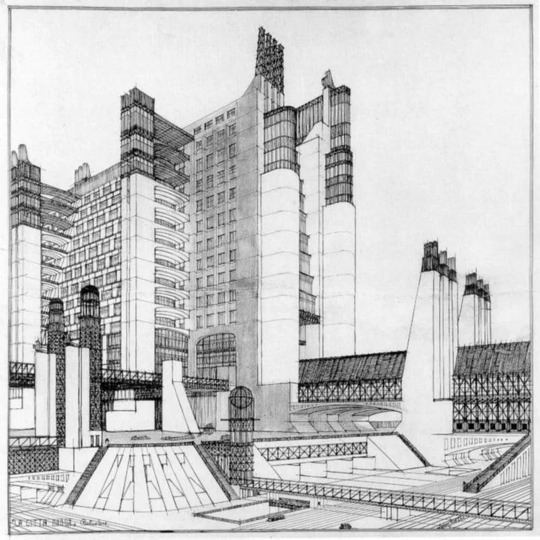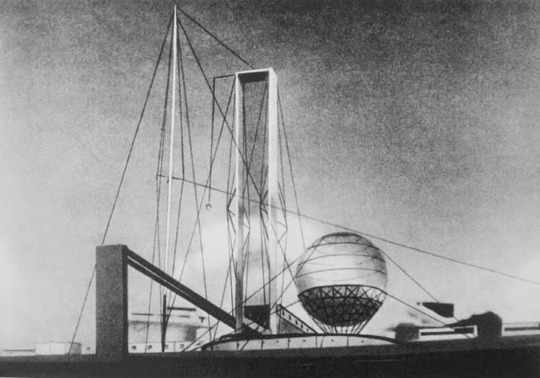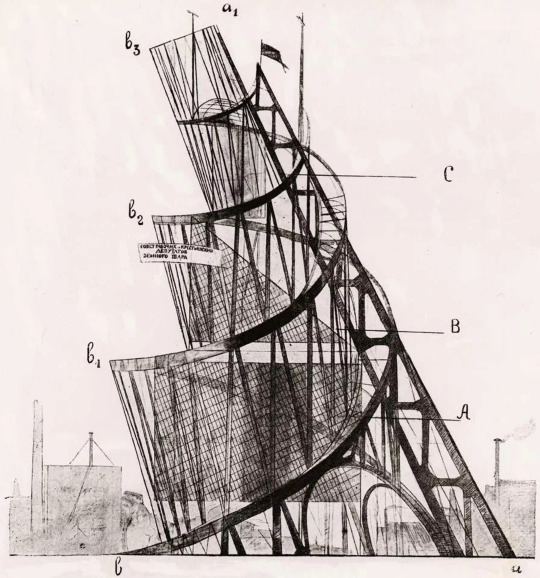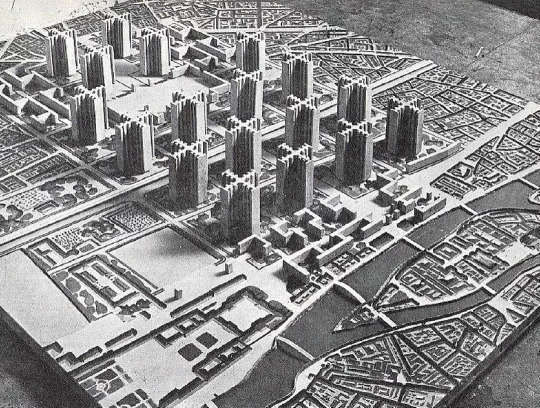#emblem of the peaceful utopia he imagined
Explore tagged Tumblr posts
Text
ok listen. LISTEN,
there are LAYERS,
atlantis is described in plato’s timaeus and critias, both of which you can read online for free because…plato; but, to summarize, in timaeus, the story of atlantis is presented within the frame of it having ultimately been relayed to the athenian poet solon by an old priest while he sojourned in egypt. i am simplifying here but essentially solon got to talking with his egyptian friends on the subject of history and found that things he considered ancient were to them practically recent history, and their notion of antiquity stretched almost unfathomably further back than his own, etc, the point is,
Thereupon one of the priests, who was of a very great age, said: O Solon, Solon, you Hellenes are never anything but children, and there is not an old man among you. Solon in return asked him what he meant. I mean to say, he replied, that in mind you are all young; there is no old opinion handed down among you by ancient tradition, nor any science which is hoary with age. And I will tell you why. There have been, and will be again, many destructions of mankind arising out of many causes; the greatest have been brought about by the agencies of fire and water, and other lesser ones by innumerable other causes.
[…]
As for those genealogies of yours which you just now recounted to us, Solon, they are no better than the tales of children. In the first place you remember a single deluge only, but there were many previous ones; in the next place, you do not know that there formerly dwelt in your land the fairest and noblest race of men which ever lived, and that you and your whole city are descended from a small seed or remnant of them which survived.
this is how solon’s pal sets up the story of atlantis. something something legends and fairytales scattered—ANYWAY, after a bit of a tangent about how fucking awesome athens is [plato, amiright] the priest gets to his point of describing the history of atlantis, which—in essence, again i am simplifying—goes like this:
in ye olden times the ocean was navigable by ship and dominated by an island nation called atlantis, which formed the hub of all travel across the sea and between other islands and made an “unprovoked expedition” (lol) against everybody else and so conquered most of europe, until they invaded athens and the athenians thrashed them so hard that “violent earthquakes and floods,” in only “a single day and night of misfortune” sank atlantis and dragged the athenian force down with her, leaving behind nothing but an impassable muddy shoal.
gestures at the great war, gestures at the CCTS, here’s a fun question: which of rwby’s four kingdoms sought to conquer the rest of the known world and nearly did, only to be utterly crushed in a final stand against the army led by the divinely-ordained king? and out of those two, which proceeded to develop the cross-continental transmit system that ushered in a new age of unprecedented global communication [ie, figuratively, travel, connection between nations]? yeah
(transmit, transit, aesops, ace-ops…)
i’ll spare you the ramble on the discourse timaeus gets into after this except to say that i do think rwby is vamping a bit on some of his ideas about creation; and move on to critias, which provides a rather more thorough description of atlantis. firstly i will note that atlantis is called that because it’s ruled by a king named atlas, not the atlas you’re thinking of, born to poseidon and a mortal woman, cleito. it’s literally just “atlas’s island.” tuck that away for later. anyway,
Looking towards the sea, but in the centre of the whole island, there was a plain which is said to have been the fairest of all plains and very fertile. Near the plain again, and also in the centre of the island at a distance of about fifty stadia, there was a mountain not very high on any side.
[…]
[Poseidon made] alternate zones of sea and land larger and smaller, encircling one another; there were two of land and three of water, […] so that no man could get to the island, for ships and voyages were not as yet. He himself, being a god, found no difficulty in making special arrangements for the centre island, bringing up two springs of water from beneath the earth, one of warm water and the other of cold, and making every variety of food to spring up abundantly from the soil.
[…]
Now Atlas had a numerous and honourable family, […] and they had such an amount of wealth as was never before possessed by kings and potentates, and is not likely ever to be again, and they were furnished with everything which they needed, both in the city and country. […] the island itself provided most of what was required by them for the uses of life. In the first place, they dug out of the earth whatever was to be found there, solid as well as fusile, and […] orichalcum, was dug out of the earth in many parts of the island, being more precious in those days than anything except gold.
[…]
First of all they bridged over the zones of sea which surrounded the ancient metropolis, making a road to and from the royal palace. And at the very beginning they built the palace in the habitation of the god and of their ancestors, […] until they made the building a marvel to behold for size and for beauty. […] All this including the zones and the bridge, […] they surrounded by a stone wall on every side, […] The stone which was used in the work they quarried from underneath the centre island, and from underneath the zones, on the outer as well as the inner side. One kind was white, another black, and a third red, and as they quarried, they at the same time hollowed out double docks, having roofs formed out of the native rock. […] The entire circuit of the wall, which went round the outermost zone, they covered with a coating of brass, and the circuit of the next wall they coated with tin, and the third, which encompassed the citadel, flashed with the red light of orichalcum.
[…]
The whole country was said by him to be very lofty and precipitous on the side of the sea, but the country immediately about and surrounding the city was a level plain, itself surrounded by mountains which descended towards the sea; it was smooth and even, and of an oblong shape, extending in one direction three thousand stadia, but across the centre inland it was two thousand stadia. This part of the island looked towards the south, and was sheltered from the north.
so, to sum up: atlantis is a circular or perhaps oblong island, naturally inhospitable but made into a paradise by the efforts of a god, organized in a series of vast concentric moats and rings of land, each surrounded by an outer wall [one black, one white, one red] of stone faced with metal; the material for all this construction was mined from underneath the kingdom itself, to the extent that whole sections were formed solely by excavation; the innermost ring contains a glorious temple honoring poseidon and cleito, the creators, which is inaccessible by mortal means; and the city’s incredible wealth is derived primarily from trade and mining.
😐
and why did atlantis sink into the sea? in essence, because its god left, and while you did highlight this i’m going to include the description in critias anyway because it is just so ridiculously on the nose,
There were many special laws affecting the several kings inscribed about the temples, but the most important was the following: They were not to take up arms against one another, and they were all to come to the rescue if any one in any of their cities attempted to overthrow the royal house; like their ancestors, they were to deliberate in common about war and other matters, giving the supremacy to the descendants of Atlas. And the king was not to have the power of life and death over any of his kinsmen unless he had the assent of the majority of the ten.
Such was the vast power which the god settled in the lost island of Atlantis; and this he afterwards directed against our land for the following reasons, as tradition tells: For many generations, as long as the divine nature lasted in them, they were obedient to the laws, and well-affectioned towards the god, whose seed they were; for they possessed true and in every way great spirits, uniting gentleness with wisdom in the various chances of life, and in their intercourse with one another. They despised everything but virtue, caring little for their present state of life, and thinking lightly of the possession of gold and other property, which seemed only a burden to them; neither were they intoxicated by luxury; nor did wealth deprive them of their self-control; but they were sober, and saw clearly that all these goods are increased by virtue and friendship with one another, whereas by too great regard and respect for them, they are lost and friendship with them. By such reflections and by the continuance in them of a divine nature, the qualities which we have described grew and increased among them; but when the divine portion began to fade away, and became diluted too often and too much with the mortal admixture, and the human nature got the upper hand, they then, being unable to bear their fortune, behaved unseemly, and to him who had an eye to see grew visibly debased, for they were losing the fairest of their precious gifts; but to those who had no eye to see the true happiness, they appeared glorious and blessed at the very time when they were full of avarice and unrighteous power.
the atlanteans became greedy and corrupt, democracy (such as it was) failed, the king seized power and sought to conquer and enslave the world, and the whole island ultimately collapsed and plunged into the sea in a violent calamity when their god abandoned them, permanently cutting off all the communication and commerce that had once flowed through its nexus.
LASTLY,
king atlas? poseidon’s eldest son by cleito? yeah he’s not the titan atlas, the one who fought against the gods during the titanomachy and was then doomed to hold the celestial spheres on his shoulders, but of course he does share the same name; and of course rwby’s atlas is led by the general of an army whose greatest historical achievement is having been decimated in a war against—well not quite a god, but you get the idea—and his office is decorated with constellations and lunar and solar motifs (note, the titan atlas did not hold the world on his shoulders, he held the sky), and throughout the first half of the atlas arc—before his rapid tailspin into doomed corruption—he is almost single-mindedly determined to reunite the world by uplifting a communications tower into the high heaves where (he presumes) salem cannot reach it… only to fail and be crushed when his kingdom is utterly obliterated by the abandonment of its creator. rwby’s atlas is atlantis ruled by a man who believes himself to be atlas telemon but turns out to be, after all, nothing more than a man who inherited the final corruption of the ideals mortal atlas was meant to uphold. “a city in the sky is held to a higher standard,” indeed.
RWBY volume 8 spoilers
Y’all Atlas was the city of Atlantis
You know how a lot of things in Rwby are based off of fairy tales and legends? I think this is another one of those.
“The legend of Atlantis is a story about a moral, spiritual people who lived in a highly advanced, utopian civilization. But they became greedy, petty, and "morally bankrupt," and the gods "became angry because the people had lost their way and turned to immoral pursuits," Orser says.” -From National Geographic. Then the city sank.
Familiar right? This is what happened with Atlas. They were a floating city, with advanced tech, near utopian in some aspects. But the people ,who were rich folks, were uncaring and cruel, we see that when Weiss returns after the fall of Beacon, and we see this especially with Ironwood.
#also something about#cleito hidden away by poseidon. the inaccessible sanctum.#and fria#and ambrosius locked behind the gilded door#also the rhetorical point of atlantis#is to serve as a moral foil to plato’s ideal polis—embodied in athens—so#the allusion works on THAT level too#ozpin raised atlas to serve as a symbolic ideal#emblem of the peaceful utopia he imagined#and in crashing and burning it laid bare all the corruption and failures of the system he created
37 notes
·
View notes
Text
Modernist Dreams Of Utopian Architecture
Utopia and Delusion
The reality of today's world can often be difficult to face. With global climate change leading to rising sea levels, unprecedented environmental destruction, a widening gap between the rich and poor, and countless humans rights violations (among many other issues), it's easy to dream of a world in which all of societal ills have been solved—a utopia. First described as a fictional island society in Greece by Sir Thomas More in 1516, the word "utopia" has evolved to mean any community with a visionary system of political and societal perfection—cities that function to improve the daily lives of their citizens.

"Utopia," Abraham Ortelius
These imagined societies can never exist. Still, the concept of a utopia has been very influential in the arts, especially for architects. At the beginning of the 20th century, the world was facing the devastation and destruction wrought by World War I. In architecture, the modernist movement was beginning to take shape, and architects believed that their buildings could help solve the world's problems. With new materials like glass, iron, and steel made available by the Industrial Revolution, modernist architects took to their drafting tables to imagine entirely new cities that supported utopian ideals and were devoid of the corrupted bourgeois sentiments often blamed for many of society's dilemmas.
Some utopian visions focused on new technology, others on open, untouched landscapes, and still others were based on new social orders, but all were united under radically avant-garde and cutting-edge architecture. While each architect's ideals varied, they all held one thing in common: they could never be built. Only able to exist in theory—the basis of a utopia—the architecture in the following utopian visions is carefully planned and highly systematic. Each detail is included to help reach a larger goal. While these visions suffered from a megalomaniacal belief that one person's ideas could change an entire society, each architects' plans are admirable in their experimental efforts. For the first part of our utopian architecture series, we take a look at five highly influential plans that fall under a modernist mindset.
The Futurists and the Machine

Drawing from "La Città Nuova," Antonio Sant'Elia
In detailing a vision of utopia, it's best to disconnect with what is already realized, and perhaps no group does this more than the Futurists. Believing that "architecture is breaking free from tradition," these forward-thinking designers aggressively rejected historical reference, doing away with monuments, classical arcades, frivolous decoration, and funereal and commemorative architecture, and instead championed a cult of the machine. Incorporating new materials like reinforced concrete, iron, and glass, the futurists envisioned highly industrialized cities built around an aesthetic of audacity and calculation. Beauty could be found in raw, bare materials, while oblique and elliptical lines had the power to imbue a city with dynamism. Sound a little severe? Perhaps, but the Futurists enthusiastically believed that science and technology could usher in a new way of life with practical and utilitarian sensibilities.

Drawing from "La Città Nuova," Antonio Sant'Elia
Italian architect Antonio Sant’Elia’s "La Città Nuova" was one of the designs most symbolic of the Futurist ideology. Unlike classic spread-out metropolises, the city of the future consisted of a centralized massive, vertical conurbation that included skyscrapers interconnected by bridges, aerial walkways, exterior elevator shafts, and funiculars. The mechanized city was designed around a lifestyle that always looked to the future, and held a foundation in renewel—constantly demolishing outdated structures to make way for newer technologies. This characteristic transience kept Sant'Elia's ever changing visions on the drafting table.
The Power of Colorful, Prismatic Glass

Left: "Glass Construction," Right: "Glass House," Hans Scharoun
Things were not looking so great for German architects in the 1910s. With widespread destruction and a crippling recession coupled with inflation from World War I, the situation in the soon-to-collapse German Empire looked rather grim. So it's no wonder that many early modernist architects at this time began drafting visions of brand new, idealized cities that sound straight out the most vivid of dreams. In 1914, Danzig-born Paul Scheerbart published his manifesto “Glass Architecture.” Unquestionably utopian in thought, Scheebart believed that the visually dazzling properties of glass—the modern emblem of the time—could raise culture to a higher level, and transform the habits of “Old Europe." In a world dreamt by Scheebart, brick buildings would be replaced by radiant colorful glass, “as though the Earth clad itself in jewellery of brilliants and enamel.” Though Scheebart’s writings were purely imaginative, they had profound influence on German expressionist architects several years later, especially Weimar-based Bruno Taut.

Drawing from Alpine Architecture, Bruno Taut
In 1917, Taut published Alpine Architecture, a series of radically enthusiastic sketches that imagined building new glass metropolises perched high on the untouched mountaintops of the Alps. And, unlike many other modernists, Taut espoused a confidence in color. Like Scheebart, Taut’s vision promoted the psychological effects of glass, supporting the idea that refracted colors shining on the glass cityscape could elevate residents' moods. To fund this new mountaintop city, Taut called for the melting down of old monuments and triumphal avenues—a peaceful anarchy that would dissolve the old, corrupt power. Taut’s Alpine city still remains among the most optimistic, if not fanciful, visions of utopia, taking on an almost fairytale-like quality as he cheered, “[h]urray and again hurray for the fluid, the graceful, the angular, the sparkling, the flashing, the light — hurray for everlasting architecture!”

With light reflecting from interior waterfalls onto its colorful glass walls, Taut's Glass Pavilion for the 1914 Cologne Deutscher Werkbund Exhibition exemplified his utopian ideals.
Utopian Structures Disperse a New Order

Lenin Institute, Ivan Leonidov
When Lenin came into power following the Bolshevik Revolution of 1917, artists and architects were searching for a new aesthetic that could symbolize the country’s new economic policies and embrace of communism. Deeply inspired both by the kinetic elements of Futurist and Cubist art and the nation's new socialist principles, Constructivist architecture blended abstract geometric elements with a movement and energy stemming from the promise of a future society defined by technology and engineering.

"Beat the Whites with the Red Wedge," El Lissitzky
And, like Soviet poster art that promoted the Revolution's ideals, bold red became the color of choice for Constructivist visionaries. Unfortunately for Constructivists, their ideas were largely ahead of their time—especially considering the USSR's limited resources.

Lenin Tribune, El Lissitzky
Many designs were purely theoretical and often included propagandistic imagery to disseminate both an artistic and a social order. El Lissitzky’s Lenin Tribune, with its leaning structure and lack of supports, functioned as a visual dogma for socialist ideals, and at the time could never be constructed. Vladimir Tatlin’s design for his Monument to the Third International—a socialist take on the Eiffel Tower—similarly existed only in vision.

Monument to the Third International, Vladimir Tatlin
With its expressive spiral construction of red-painted steel and iron surrounding three central spaces that rotated according to day, month, and year, Tatlin’s monument symbolized an industrialized USSR of the future. However, the impractical nature of these visions were evident after Tatlin's tower was realized only as a small wood model in Petrograd.
The Ego of The Modern Master

"Plan Voisin," Le Corbusier
Through the 1920s and 1930s, modern “master” Le Corbusier experimented with a series of highly utopian urban planning concepts, stemming from his visions of an ideal city that hoped to reunite citizens with a highly ordered and open environment, elevating culture on a universal basis. In 1925, he proposed the "Plan Voisin," an idealistic mega-project that called for the bulldozing of central Paris and replacing it with monolithic 60-story towers set within an organized street grid and ample green space. Corbusier believed the efficient plan could transform society by raising the standard of living for all socioeconomic levels, thus sparing the country another revolution. However, the "Plan Voisin" actually divided housing based on class, illustrating flaws in his utopian aspirations. The plan was outright rejected, and the frustrated architect ventured outside Europe to spread his ideas.

"Plan Obus," Le Corbusier
With an overtly orientalist mindset, Le Corbusier traveled the French-controlled North African city of Algiers to experiment with and perfect his utopian urban plans. While it was never commissioned, Corbu drafted the “Plan Obus,” a vision that intended to connect Algiers' Casbah, the city's traditional quarter, more seamlessly with the colonial waterfront area. However, the architect’s plan was steeped in class stratification hidden under the veil of modernizing a supposedly “backwards society.” Le Corbusier envisioned a modernized concave and convex apartment complex on the slopes above the city, connected to a new administrative center on the coast. These two sectors, which would mainly have accommodated French colonists, were to be connected by an elevated road over the Casbah, further polarizing an already segregated city.

Palace of Assembly (Chandigarh), Le Corbusier
Le Corbusier’s utopian ideals were entrenched in colonial thinking—the civilized European designing to better the non-West—and typically benefited upper classes. Most of Corbu's urban plans never materialized, except for his later master plan for Chandigarh, India, the success of which is still debated today.
Utopia and Delusion

"Broadacre City," Frank Lloyd Wright
While many earlier modernist utopian visions centered around densely packed cities, Frank Lloyd Wright rejected urban areas altogether. Believing that city life was plagued by corrupted values, FLW fled to the suburbs, where he envisioned a new, modernized lifestyle set within bucolic landscapes. In 1932, Wright drafted a vision for his "Broadacre City," named because each family received a one-acre plot of land. The complete antithesis of Le Corbusier’s ideal cities, Broadacre championed low-density development centered around automobile transit, where all amenities could be easily accessed within a radius of 150 miles. Wright detailed plans for spacious landscaped highways, beautifully designed public service stations, roadside markets, garden schools, and parks, which were integrated to foster self-improvement and maximize enjoyment. Apartment buildings and train stations were kept to a minimum, as FLW believed that pedestrians could only safely exist on open land, and embraced the benefits of the countryside.

"Broadacre City," Frank Lloyd Wright
Sounds a little like an idealized version of today’s sprawling suburbs, right? Well, Wright also conceived of the “aerator,” a small helicopter provided for each family that could land without a landing strip. Together, open land, automobiles, and Jetsons-like aerators promised citizens a city filled with more light, more freedom of movement, and more spatial freedom in the “ideal establishment of what we call civilization.” Unsurprisingly, FLW’s utopian city did not anticipate today’s widespread problems of suburban sprawl and the environmental degradation that comes from the basic principles of Broadacre. Much like utopian visionaries before, "Broadacre City" was born from a disgust with city life—a modern man’s eschewal of overcrowded, aesthetically displeasing lower-class areas.
SOURCE: https://architizer.com
#Architecture#utopia#modernism#ideas#futurism#le corb#le corbusier#frank lloyd wright#plans#communism#community#society#ideal#lenin#vladimir tatlin#el lissitzky#ivan leonidov#new order#bruno taut#history#architizer#hans scharoun#antonio sant'elia#abraham ortelius#thomas more
2 notes
·
View notes